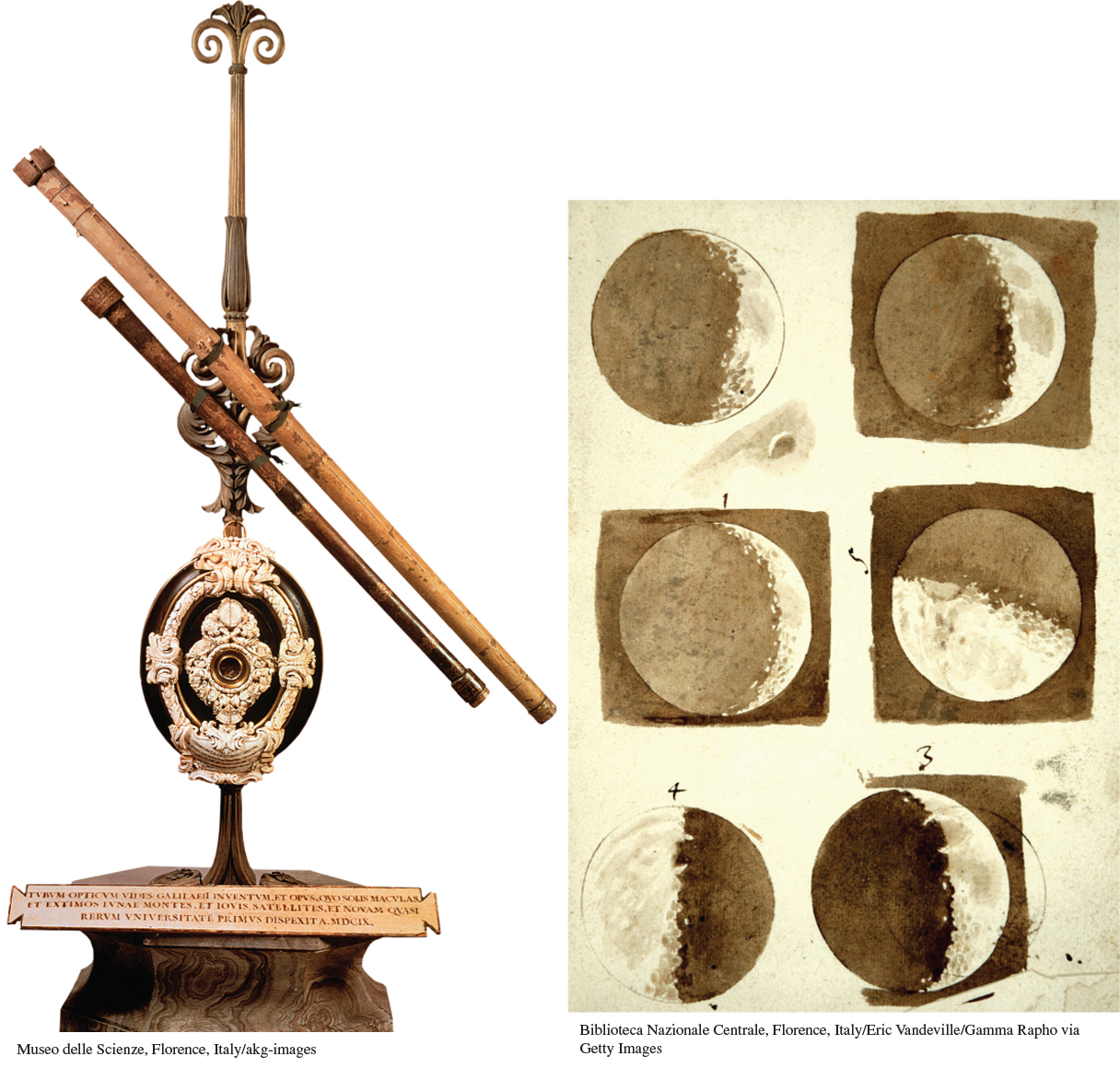Brahe, Kepler, and Galileo: Proving Copernicus Right
One astronomer who agreed with the Copernican hypothesis was the Danish astronomer Tycho Brahe (TEE-
Upon the king’s death, Brahe acquired a new patron in the Holy Roman emperor Rudolph II and built a new observatory in Prague. For twenty years Brahe observed the stars and planets with the naked eye in order to create new and improved tables of planetary motions, dubbed the Rudolphine Tables in honor of his patron. His limited understanding of mathematics and his sudden death in 1601, however, prevented him from making much sense out of his mass of data. Part Ptolemaic, part Copernican, he believed that all the planets except the earth revolved around the sun and that the entire group of sun and planets revolved in turn around the earth-

510
Brahe’s assistant, Johannes Kepler (1571–1630), carefully re-
Kepler’s contribution was monumental. Whereas Copernicus had used mathematics to describe planetary movement, Kepler proved mathematically the precise relations of a sun-
While Kepler was unraveling planetary motion, a young Florentine named Galileo Galilei (1564–1642) was challenging Aristotelian ideas about motion on earth. Like Kepler and so many early scientists, Galileo was a poor nobleman first marked for a religious career. Instead, his fascination with mathematics led to a professorship in which he examined motion and mechanics in a new way. Galileo focused on deficiencies in Aristotle’s theories of motion. He measured the movement of a rolling ball across a surface, repeating the action again and again to verify his results. In his famous acceleration experiment, he showed that a uniform force — in this case, gravity — produced a uniform acceleration. Through another experiment, he formulated the law of inertia. He found that rest was not the natural state of objects. Rather, an object continues in motion forever unless stopped by some external force. His discoveries proved Aristotelian physics wrong.
On hearing details about the invention of the telescope in Holland, Galileo made one for himself and trained it on the heavens. He quickly discovered the first four moons of Jupiter, which clearly suggested that Jupiter could not possibly be embedded in an impenetrable crystal sphere as Aristotle and Ptolemy maintained. This discovery provided new evidence for the Copernican theory, in which Galileo already believed. Galileo then pointed his telescope at the moon. He wrote in 1610 in The Sidereal Messenger: “By the aid of a telescope anyone may behold [the Milky Way] in a manner which so distinctly appeals to the senses that all the disputes which have tormented philosophers through so many ages are exploded by the irrefutable evidence of our eyes, and we are freed from wordy disputes upon the subject.”2 (See “Evaluating the Evidence 16.1: Galileo Galilei, The Sidereal Messenger.”)
Reading these famous lines, one feels a crucial corner in Western civilization being turned. No longer should one rely on established authority. A new method of learning and investigating was being developed, one that proved useful in any field of inquiry. A historian investigating documents of the past, for example, is not so different from a Galileo studying stars and rolling balls.
